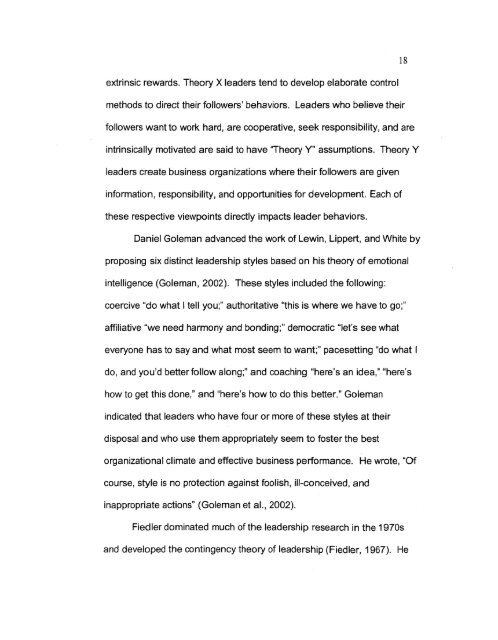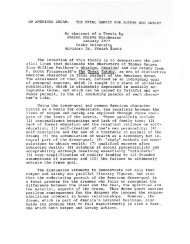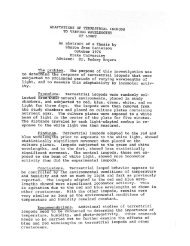LEADERSHIP CHARACTERISTICS OF ... - Drake University
LEADERSHIP CHARACTERISTICS OF ... - Drake University
LEADERSHIP CHARACTERISTICS OF ... - Drake University
Create successful ePaper yourself
Turn your PDF publications into a flip-book with our unique Google optimized e-Paper software.
extrinsic rewards. Theory X leaders tend to develop elaborate control<br />
methods to direct their followers' behaviors. Leaders who believe their<br />
followers want to work hard, are cooperative, seek responsibility, and are<br />
intrinsically motivated are said to have '(Theory Y" assumptions. Theory Y<br />
leaders create business organizations where their followers are given<br />
information, responsibility, and opportunities for development. Each of<br />
these respective viewpoints directly impacts leader behaviors.<br />
Daniel Goleman advanced the work of Lewin, Lippert, and White by<br />
proposing six distinct leadership styles based on his theory of emotional<br />
intelligence (Goleman, 2002). These styles included the following:<br />
coercive "do what I tell you;" authoritative "this is where we have to go;"<br />
affiliative "we need harmony and bonding;" democratic "let's see what<br />
everyone has to say and what most seem to want;" pacesetting "do what I<br />
do, and you'd better follow along;" and coaching "here's an idea," "here's<br />
how to get this done," and "here's how to do this better." Goleman<br />
indicated that leaders who have four or more of these styles at their<br />
disposal and who use them appropriately seem to foster the best<br />
organizational climate and effective business performance. He wrote, "Of<br />
course, style is no protection against foolish, ill-conceived, and<br />
inappropriate actions" (Goleman et al., 2002).<br />
Fiedler dominated much of the leadership research in the 1970s<br />
and developed the contingency theory of leadership (Fiedler, 1 967). He<br />
18
















